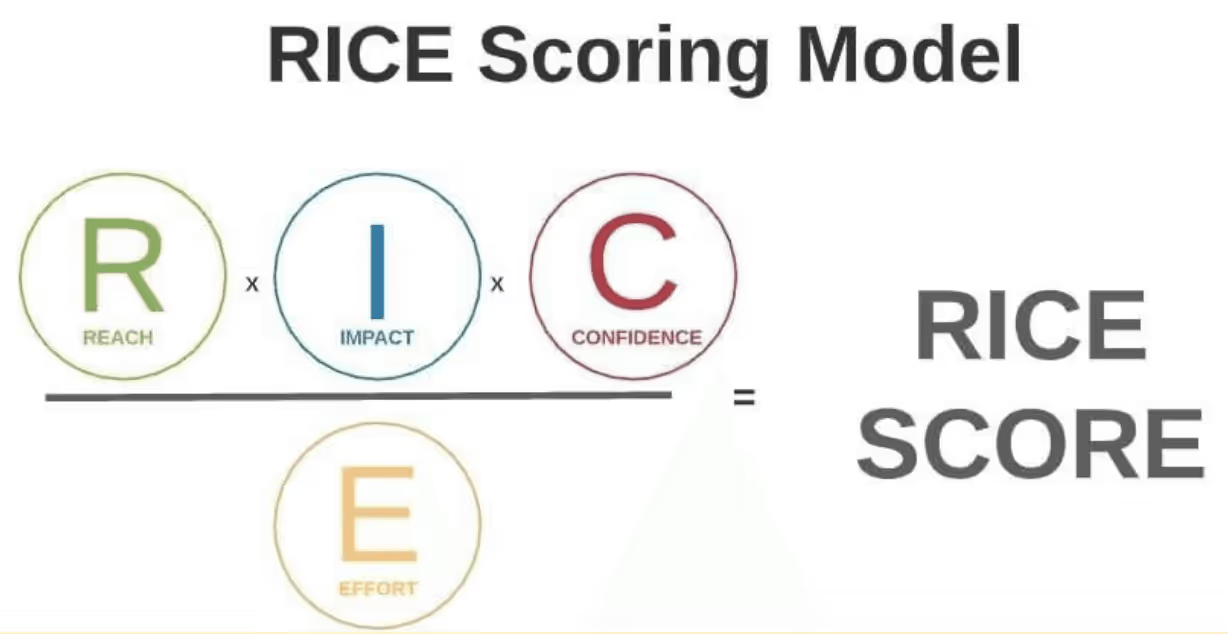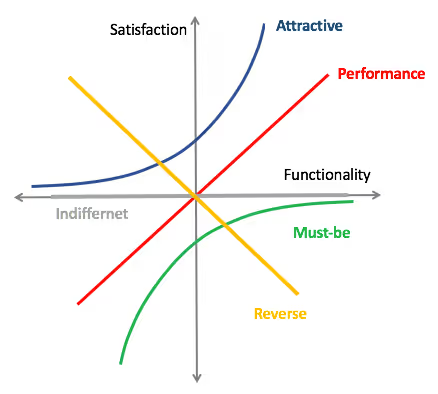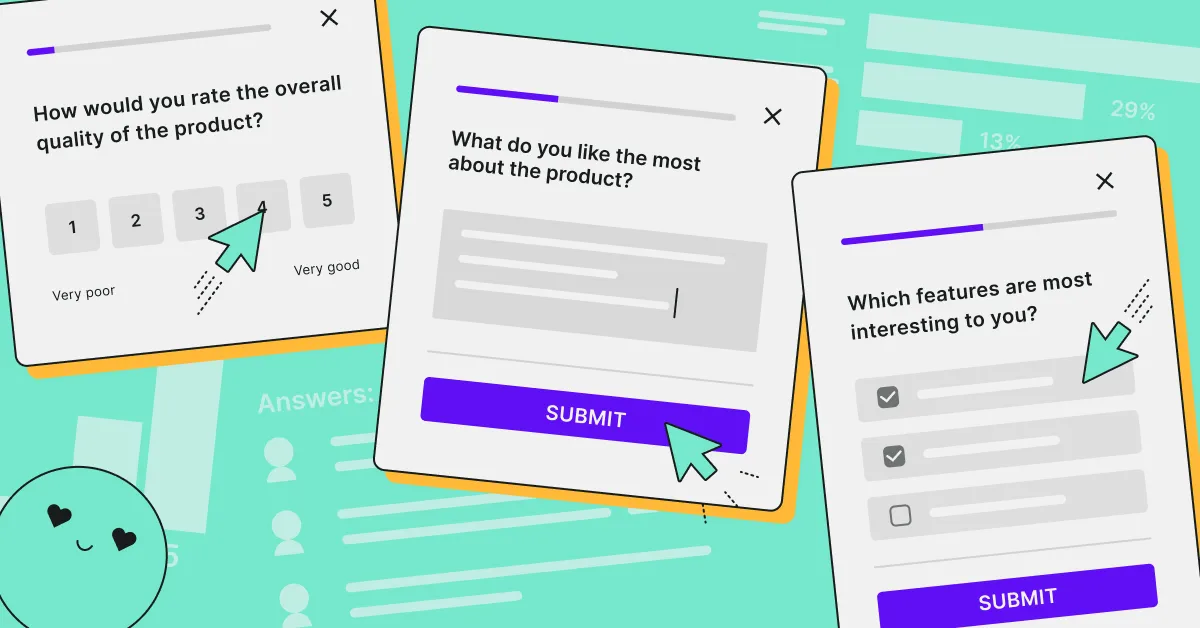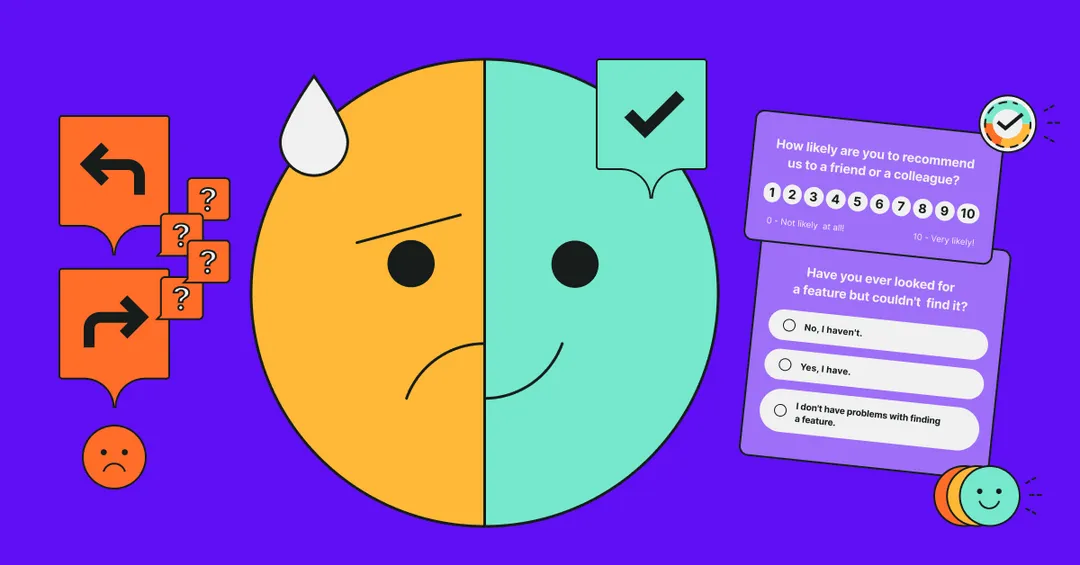Fumbling in the twilight zone of product prioritization? Know this - you're not the only one missing the train of efficient product management.
Our Mobile App Feedback Report uncovers that over 56% of mobile app creators struggle with product prioritization. Moreover, poorly planned or—even worse—unplanned product prioritization is akin to steering businesses away from their real goals. The cost is not only in lost time but also frustrated teams, wasted resources, and missed market opportunities.
Take a deep breath. We won't let this fearsome night continue. We're here with a flashlight bursting with wisdom, lighting the path to master product prioritization, ensuring you're no longer left behind!

Master the Art of Product Prioritization: A Comprehensive Guide
No need to panic if you find yourself in a maze when it comes to product prioritization. It's a common hurdle for product managers, but with the right techniques and understanding, you can ascend to unmatched proficiency.
Step 1: Understand the Importance of Product Prioritization
Product prioritization is more than just deciding what to work on next. It's crucial to align your team efforts with your overall business strategy.
To put it simply, product prioritization is the DNA of your successful product. The benefits might surprise you.
An effective product prioritization can:
- Create focus - It helps to eliminate the unnecessary and points everyone in the same direction.
- Increase productivity - By prioritizing your work, you remove waste from your process, ensuring that your product team doesn't work on feature requests that don't provide business value.
- Prioritize features that deliver customer value - It improves customer experience and gives your product a competitive advantage.
Step 2: Get to Know The Most Popular Prioritization Frameworks
Knowing how to prioritize your product backlog can be daunting if you're unfamiliar with the techniques used in the industry. But, once you have the tools, you can determine which method will work best for you and your product team.
Here are some common techniques to potentiate your decision-making:
The Value Vs. Complexity Quadrant: Plot your potential features (or products) on a quadrant divided by value (high or low) and complexity (high or low). The items in the high-value, low-complexity quadrant are your top priorities.

The RICE method: Here, you score your items on Reach, Impact, Confidence, and Effort, then come up with a final score to decide which potential features to work on next.
The Kano Model: This method helps you understand how your customers perceive certain features and what their expectations are.
You might find one technique more appealing than the others, or you might decide to combine a few, depending on your specific prioritization process.
By understanding the importance of product prioritization and familiarizing yourself with key techniques, you're taking great strides to ensure that your product delivers maximum customer value. Embrace the complexity, and remember - mastery is a process, not a destination.
Dive Deeper: Exploring Product Prioritization Frameworks
Having equipped ourselves with the art of product prioritization, let's delve into the richness of its diverse methodologies, specifically the RICE Scoring Model, the Kano Model, and the MoSCoW prioritization framework. Understanding these frameworks will yield the following:
- Distinctive insights into prioritizing product features,
- Modulates decision-making grounded on quantitative and qualitative factors, and
- Enables us to cater to diverse user expectations effectively and improve customer satisfaction.
RICE Scoring Model
This model revolves around four parameters - Reach, Impact, Confidence, and Effort.

Reach stands for the number of customers affected in a set timeframe, typically a quarter.
Impact represents the degree of effect on an individual client. Estimating its values is more qualitative than quantitative. For instance, a substantial impact could result in a 3 on a sliding scale, while a minor impact would be awarded a 0.5.
Confidence signifies the assurance level of both Reach and Impact. It also includes the likelihood of the entire project succeeding.
Effort signifies the amount of work needed to implement the item in question. It’s usually estimated in 'man-months.'
After calculating all parameters, the RICE score is computed, directing us to make insightful decisions.
Kano Model
Born out of the intersection between customer satisfaction and feature implementation, the Kano Model is pivotal in product management.

The model classifies customer preference into five categories - Attractive, One-Dimensional, Must-be, Indifferent, and Reverse. The beauty of this model lies in its focus on customer emotions and perception, providing us with a comprehensive understanding of which features to prioritize.
By analyzing customer feedback and preferences, better product features can be developed and prioritized, ensuring customer happiness.
MoSCoW Method
The MoSCoW method categorizes features into four distinct sections - Must have, Should have, Could have, and Won't have. This ensures clear communication with stakeholders and end-users and safeguards against feature creep. Each category's essence lies in its definitive approach to feature prioritization.

Must-haves are non-negotiable features without which the product would not function. Should-Haves are valuable but potentially not time-critical features. Could-Haves are attractive features that aren't essential to the system's current operations. Won't-Haves are the least-critical and least-impact features.
This method gives a clear guideline on how to prioritize features while ensuring that the minimum viable product (MVP) is functional and valuable.
Implementing Product Prioritization: A Practical Approach
Embarking on product prioritization, you now have a deeper understanding of prioritization frameworks. The next essential phase is translating this knowledge into practice. So, let's walk through a pragmatic approach.
Step 1: Define Your Product Vision and Strategy
Understanding your product's vision and strategy forms the foundation on which your prioritization will stand. It's like a lighthouse, guiding your ventures towards the right shore. Here are some key points to consider while defining your product vision and strategy.
Having a clear vision and strategy helps in aligning your product ideas with your business goals. It acts as a filter, letting only the right ideas pass through.
Step 2: Identify and Evaluate Your Product Ideas
Coming up with great ideas isn’t the hard part; it’s pinpointing those with real potential that can be tough. As a Product Manager, you might need to evaluate a plethora of product ideas before finding your winner.
This process goes beyond just gut feeling—it must be backed by data. Customer feedback, market trends, and competitive analysis—all these can lend valuable insights.
Step 3: Apply Your Chosen Prioritization Framework
After sieving out the best ideas, the next logical step is to use one or more product management prioritization frameworks. Such frameworks puts your ideas through a structured, objective analysis. This could be anything from RICE, MoSCoW, to the Kano model.
The goal is to make data-driven, impartial decisions to determine which ideas take center stage.
Step 4: Review and Adjust Your Prioritization Regularly
Product prioritization is a dynamic process. It's not ‘set it and forget it’. Market trends evolve, business objectives shift—your product prioritization should be flexible to adapt.
Regular review meetings, adjusting according to feedback, and staying open to iterative changes are paramount to your product’s development.
Always remember - what may seem like a great idea today might not hold the same business value tomorrow. Regular reassessments ensure you're always on top of your game.
While each step above builds on the overall strategic puzzle of product prioritization, keep in mind how well you tackle the process remains a key differentiator.
Overcoming Challenges in Product Prioritization
To prioritize products effectively, you need to know how to balance stakeholder interests which may be conflicting, but that’s not all. Uncertain market conditions require flexibility and strategic movements, while the whole strategy needs to adapt to what your customers expect.
Challenge 1: Balancing Stakeholder Interests
Stakeholders can have varying interests regarding product development. Prioritizing those interests can be challenging. The key? Balance - a harmonious blend of needs, wants, and considerations.
Creating this balance starts by identifying your stakeholders. This could include customers, investors, department heads, and even marketing or sales teams. Once identified, you can begin to comprehend their essential interests. From here, you can align these interests with the product goals.
Prioritize the interests that directly impact the product's success and strategically manage expectations for the rest. Remember, The goal isn't to please all but rather to harmonize the varying interests that lead to the product's success.
Challenge 2: Dealing with Uncertain Market Conditions
Uncertain market conditions can be a roadblock to product prioritization. However, understanding and strategic planning can curb their impact. In uncertain conditions, the ability to swiftly pivot is crucial.
Before you start looking at a broader picture, get to know your users. Online surveys can be a good market research tool to pinpoint your user personas. Without knowing who exactly uses your product, it’s impossible to develop it with the right angle.
Conducting regular market research can aid in staying abreast with ongoing trends. Use this information to form multiple product roadmaps. So, if change hits, you are prepared with a well-structured alternative plan.
Keep an eye on your competitors but don't let their movements dictate your product decisions. Instead, learn from their strengths, understand their weak points, and create a product strategy tailored to your unique business.
Challenge 3: Adapting to Changing Customer Needs
Customers form the core of any business. Their ever-evolving needs can be a challenge to keep up with. Nonetheless, adapting these needs into your product roadmap is a must for a product's success.
You can check our user stories to see how different product teams prioritize product features to enhance their products' user journey.

Staying connected with the customers is paramount. Regular user feedback, ongoing communication, user testing, etc., can provide valuable insights into their expectations—both quantitative (ex.: how many users request a feature?) and qualitative (ex.: how users evaluate basic features).
Remember, customers' needs might not always be evident. Sometimes, they might not even be aware of their own needs. It’s up to you to identify and understand these needs and smartly incorporate them into the product.

Adapting to changing customer needs isn’t just about staying relevant. It’s about showing your customers that you value their input, thereby nurturing stronger relationships and fostering brand loyalty.
Overcoming these challenges will make your product prioritization more effective. Not only will you create a product that resonates with the customer's needs, but you'll also foster a strong foundation that withstands the test of challenging market conditions. It starts with understanding, transitions into action, and ends with result-driven improvement.
What is Product Prioritization?
Definition and Importance
Product prioritization is the process of deciding which products or features should be prioritized for development based on a variety of factors, such as customer demands, market trends, or internal resources.
This practice is vital for any business that develops and sells products. The reason for its importance lies in scarce resources. Not everything can be built and made available to the market at the same time. Hence, businesses have to make tough choices and prioritize what gets done first.
Deciding on priorities is also about opportunity costs. When a Product Manager chooses to build one product or feature, they are simultaneously choosing not to build others. Therefore, getting the priorities right guarantees that the most valuable opportunities are not missed.
Role in Product Management
The fundamental purpose of product management is to guide the successful development and marketing of a product. The role of product prioritization within this is crucial. It helps product managers make strategic decisions about what gets built, when, and why.
Product prioritization is a structured way for product managers to decide on the focus areas for their teams. It brings alignment on priorities within the team and the organization, reducing the friction that can sometimes occur over what should be tackled next.
By having a shared understanding of priorities, the product team can deliver value faster and in a more predictable manner. Remember, every feature developed is a step closer to making your product stand out, win customers, and beat the competition.
Impact on Product Success
When executed strategically, product prioritization can lead directly to product success. Product prioritization, done right, aligns the development effort with the business goals and customer needs. This alignment is often the difference between a product that resonates with the market and one that doesn’t.
For instance, a well-prioritized backlog will ensure that features that can generate revenue or increase market share are dealt with first. As a result, it directly impacts a company's bottom line. It also ensures customer satisfaction by delivering the products and features they want and need.
Product prioritization acts as our guiding light, leading us towards product success. Without it, our direction becomes uncertain, risking our product's relevance in the competitive marketplace.
Riding the Product Prioritization Wave
Product prioritization isn't a puzzle you solve once. It's a recurring challenge. Your stakeholders' needs, market trends, and company goals always change, and your product priorities must adjust. Balancing user requests, business constraints, surface-level symptoms, and underlying problems is essential. It's never "one-size-fits-all".
Harness this information to create your formula for success. Remember, user involvement helps identify critical features, and regular stakeholder checks maintain alignment with business goals. Use a prioritization matrix to visualize decisions and lean in on your intuition when it comes to resolving conflicts between data and perceived user needs.
Realize the potential of every decision. Consider our strategies, pick your combination, and dive into your prioritization challenges with a new perspective.
Your product quality and company trajectory can shift if you develop a solid grasp on how to prioritize features and make meaningful product updates.
Catch the prioritization wave and never get left behind again. Trust in your product roadmap; it's your surfboard navigating the ever-changing tides of the business world.
Remember: Research. Prioritize. Develop. Analyze. Repeat. This is your mantra. This is your edge.
You might also be interested in:













.webp)
.webp)
.svg)

.svg)



